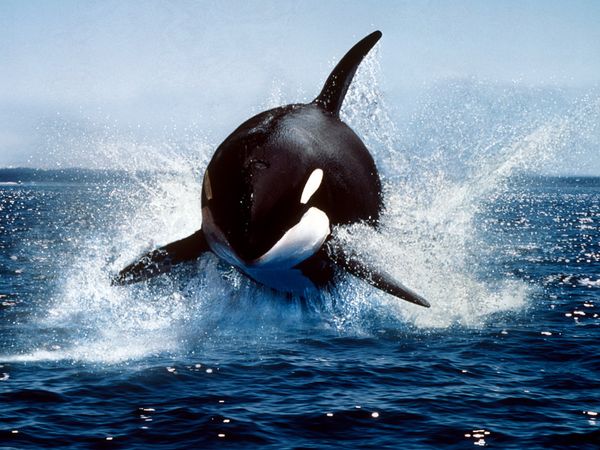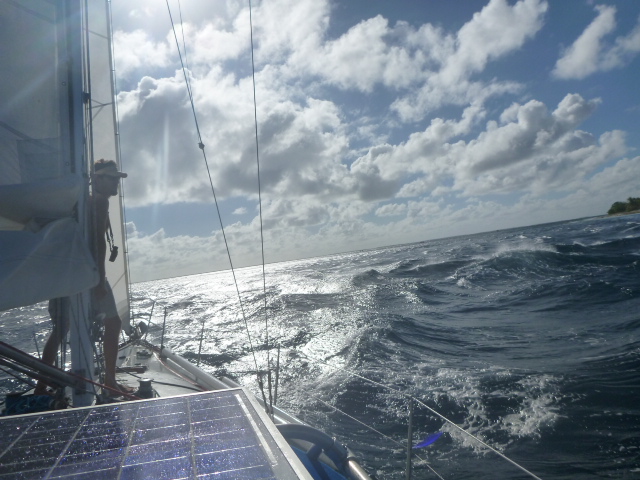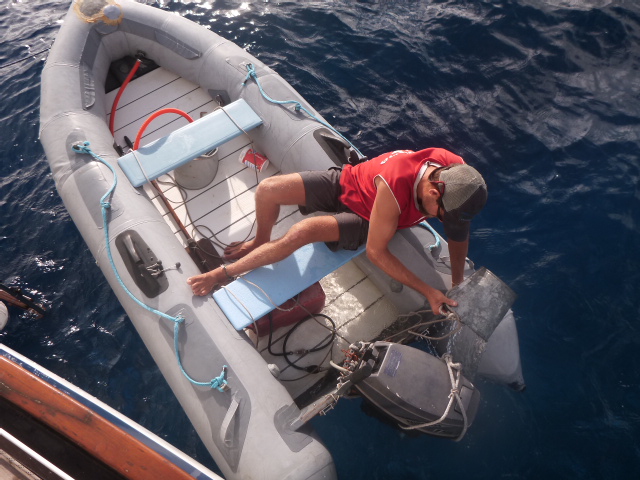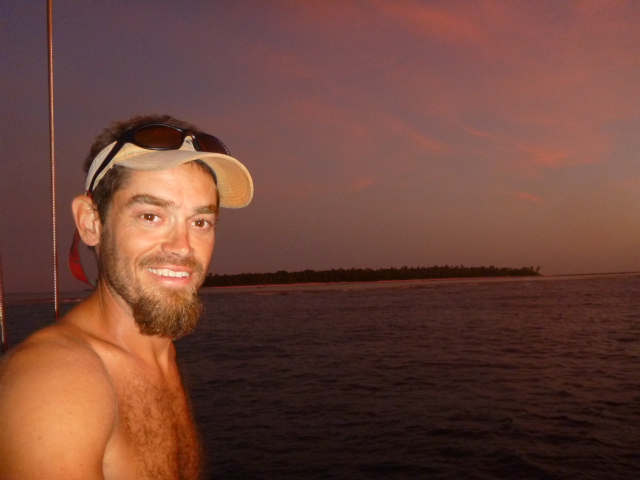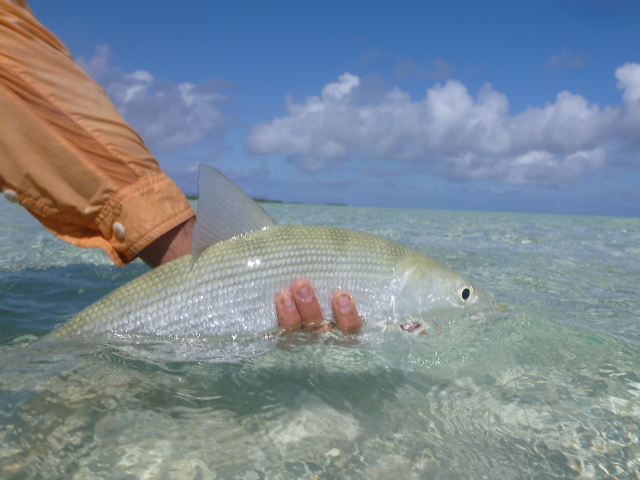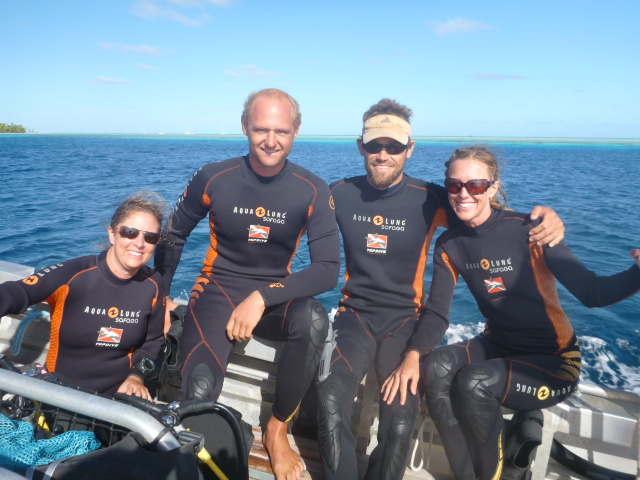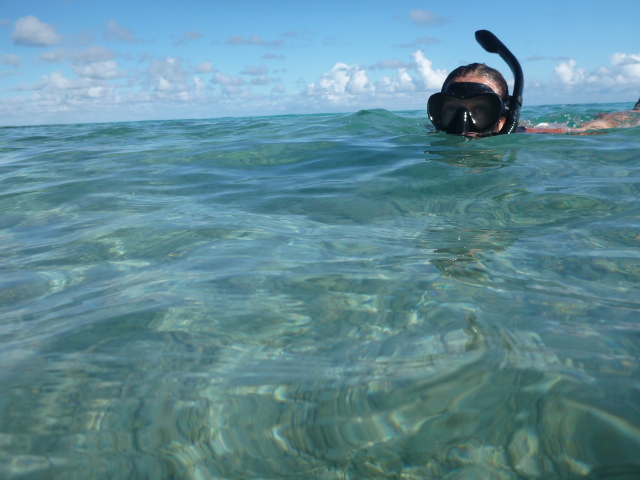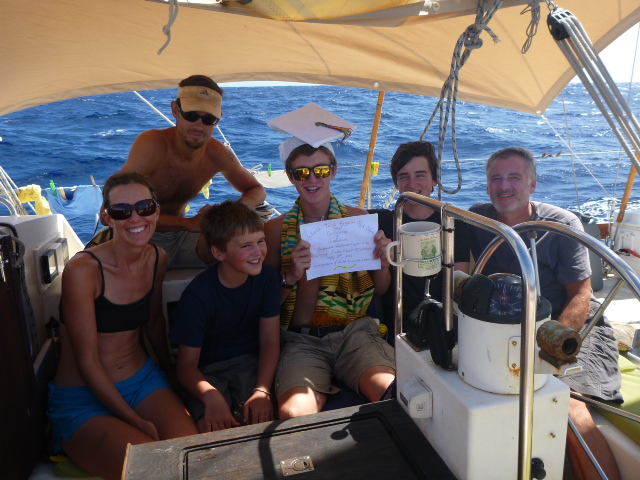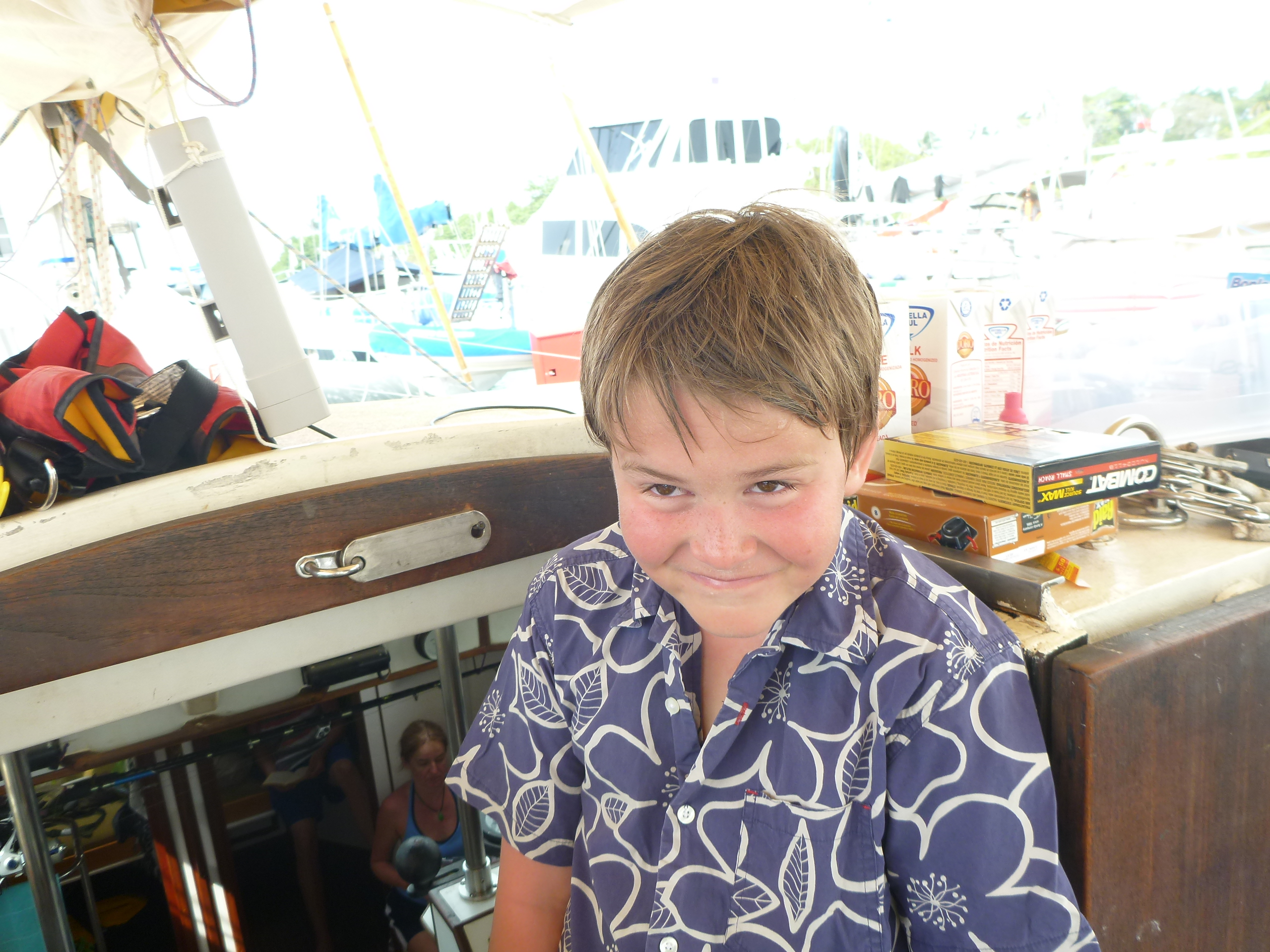Holy S*^t! An Orca Whale!
NOTE: This video is about five months late. But better late than never, right?
Llyr and her crew were halfway through our 33-day crossing of the Pacific Ocean from Panama to the Marquesas Islands. Specifically, we were somewhere west of the Galapagos Islands by about 6 days. We hadn’t seen any wildlife of any sort for a week — the middle of the ocean feels a lot like a big empty desert. We also hadn’t had a good rainstorm since we left Panama City.
First, the rain came one afternoon. Not just a piddly drizzle, but enough to go on deck and soap up, maybe even break out the shampoo. After the boys all finished their rain dance showers, I went up last to enjoy the freshwater blessing. As I reached behind me for a washcloth, I caught the unmistakable sight of a giant eyeball looking up at me from the water.
My brain flashed instantly through the brief image: black and white markings, smooth skin, big fin. My mouth took over before my brain caught up, screaming at full volume: “Holy shit! Orca! Orca! Omigod! Everybody on deck. Rob! Rob! Whoa!”
I saw Rob’s face look through the porthole toward deck with a terrified expression … and realized he was looking out at sea, as he assumed my screaming meant I’d fallen overboard. Repeated “orca” screams got through, and the whole crew piled out to the stern, where we got to watch this lone killer whale check us out. She/he swam under our stern several times, rolling over to look at us with a big, beautiful eye.
It was one of the coolest experiences I’ve ever had in the wilderness.
We didn’t see any more wildlife for over a week during that crossing. And I still had soap in my ears that night, since I was too distracted to rinse after the whale encounter.

